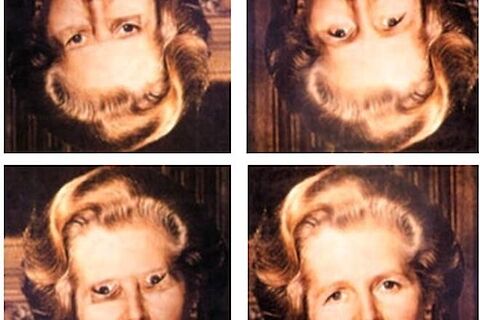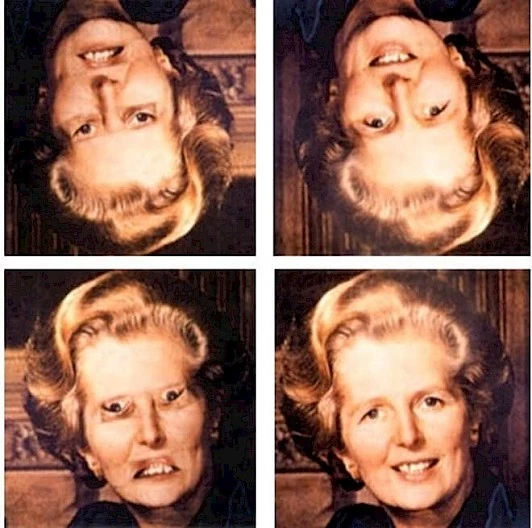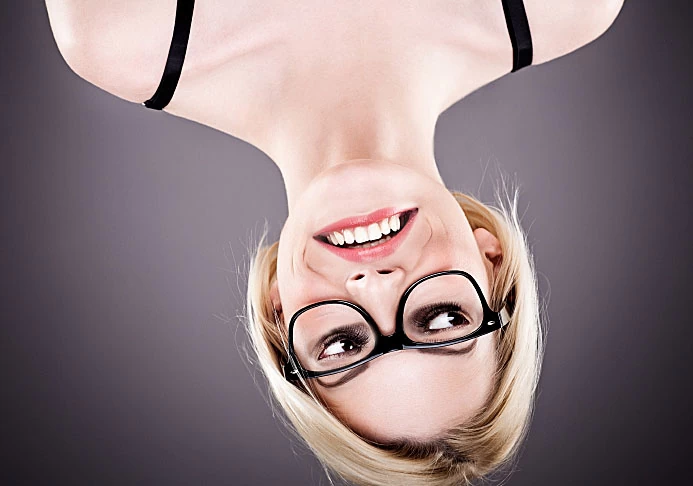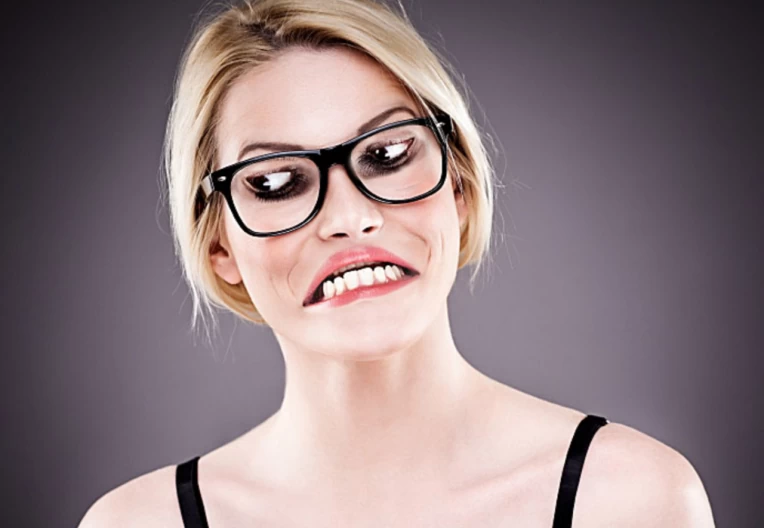

The Thatcher Effect
If you are a regular follower of the blog, you will know that I love researching the psychology of the brain. One of the things that really intrigues me is the way the brain can trick us into seeing things differently from how they actually are. This can often be tied into many different paranormal experiences and is essentially something that should be considered when trying to debunk an experience. While the Thatcher Effect is not an illusion that would be related to the paranormal, it is still important for us to be aware of the different ways our brain can trick us, so that if we ever are in a situation where it may be relevant, you have all the information you need to know!
What is the Thatcher Effect?
We know in basic terms that if our brain cannot properly interpret something, it fills in the gaps for us. The easiest comparison to make is pareidolia. It is why we see faces in smoke or mist or shapes in clouds. Our brain is trying to make sense of it, but it can't so it connects the image with something familiar. The Thatcher effect (also known as the Thatcher illusion) was first reported in 1980 by Peter Thompson - a Professor at the University of York in a paper called 'Margaret Thatcher: a new illusion, in Perception.'. When a picture of a face is turned upside down yet the eyes, nose, or mouth remain in the same position, the brain doesn't recognize this error unless it is viewing the face turned the right way up. To demonstrate this, Peter Thompson used an image of Margaret Thatcher (hence why it is called the Thatcher Effect).

Photos belong to Professor Peter Thompson
You can see from the above image when the face is turned upside down, while it still doesn't look quite right, it is not instantly recognizable that the features such as the eyes and mouth are facing the wrong direction. It isn't until the face is turned the right way up that we notice that something is truly wrong. While there was a myth that this could only be done with Margaret Thatcher's picture, this is untrue. Website thatchereffect.com allows you to experiment with different celebrity faces and eventually you will be able to do your face as well (although if you are handy with Photoshop you could do it too!).

Image Source: Thatchereffect.com
Upside down, all looks pretty normal with the above picture!

Image Source: Thatchereffect.com
YIKES! Maybe not!
This illusion highlights just how important faces are to humans. We each have our own defining features. Even identical twins that look alike will have small defining features that help you to tell them apart. It shows us that our brains do not interpret a face on its own as a whole and that it takes note of the defining features.
After using an electroencephalogram to monitor the brain’s activity when an individual looks at Thatcherized pictures, Carbon, Schweinberger, Kaufmann & Leder (2005) report:
…inverted Thatcherized faces are processed differently compared to normal faces, although they perceptually look quite like normal faces. We suggest that these differences arise early in time at the initial encoding of faces and are probably mediated by brain areas in or near the lateral occipital complex. (pg. 554)
This finding suggests that our brain knows there is a distinct difference between Thatcherized pictures and normal pictures. We are just not conscious of the discrepancy.
How does this relate to the paranormal?
In short, it doesn't really. What is important to take away from this though is the information we have learned about the brain. Faces are important to us. Filling in blanks is important to the brain. We don't look at things as a whole, we notice all the little features. Realistically, you are not likely to encounter an upside-down face on an investigation that has its facial features pointing in the wrong direction and if you did, I know I would probably run in the opposite direction. Our brain however is constantly trying to make sense of things. We know when it can't, it makes us see things differently. I would imagine that seeing a body that we perceive as a human that has no face would be somewhat confusing to the brain. Something like a shadow figure. So why doesn't it try to make a see a face?
For discussion purposes, if a person is seeing what is believed to be a shadow person a plain black solid human-like figure with no face, how does the brain process this information? Does the fact that the brain allows us to see this form without trying to make us see some sort of face on it make it more of a significant sighting? If our brain is trying to make things familiar and makes us see faces in smoke etc, why doesn't it try to change how we see this solid human-like form with no face? Does this mean we really are seeing something paranormal? On the other hand, is the fact that the brain isn't trying to change how we see it mean that we are not really seeing it in the first place? Is the shadow person itself a form of another optical illusion? Do we feel uneasy in the presence of this shadow figure because it is really our brain reacting to something it cannot interpret? I of course don't have any answers here, it is just some questions and something to think about. I too have had experiences and sightings of what I consider to be shadow figures. To this day, I don't really know if what I saw was real or my eyes playing tricks on me. This is why I always encourage people to have a video with you on an investigation. Of course, I didn't have one when I had my sightings. Why is it we always have these sorts of sightings when we don't have a camera or it is pointing the other way? It does also make me wonder if we are supposed to actually record and capture these sorts of things. Anyway, a video is an unbiased view of what we are seeing. It sees things as they really are. If you were to capture this shadow figure on film, then you know it is not an optical illusion, and the process of trying to figure it out continues.
If we can better understand how our brain works, we can maybe start to get a little bit of an understanding as to how we are able to see or experience these things that we believe are paranormal. For myself, I don't necessarily look at why are we seeing these things, I am interested in the how. How is it we are able to see these things? Whether it is just our brain playing tricks or does our mind allow us a peek through a doorway to something else entirely? It is probably an answer we will never have as I don't think it will be possible for any scientist or psychologist to fully understand how our brain works and exactly what our mind is capable of. Maybe just opening our minds up to the possibilities is a good start!
If you enjoy LLIFS, consider buying me a book (otherwise known as buy me a coffee but I don't drink coffee and I LOVE books). Your donation helps to fund the LLIFS website so everyone can continue to access great paranormal content and resources for FREE!

Top pages with similar subjects
Don't forget to follow the Facebook page for regular updates
Join the mailing list to receive weekly updates of NEW articles. Never miss an article again!
Buy the latest and past issues Haunted Magazine
Check out the books written by LLIFS